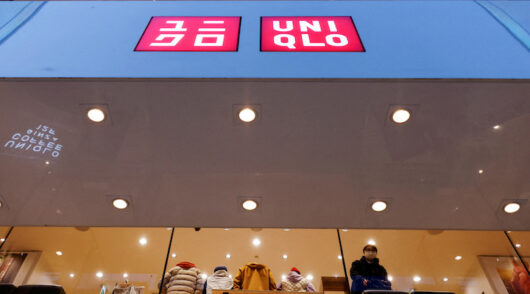Over the next three years, a staggering 40 million sqm of shopping mall development is predicted across China.
Of this, 55 new malls will be in Shanghai – a city whose retail industry has been turned on its head, literally, by the emergence of a mega metro system. Street level stores still command the top rents, but sub-terrain space is now highly desirable, especially among the footfall hungry fast-fashion brands.
“Shanghai metro has grown amazingly quickly, newly developed malls are popping up above or close to the stations,” said Rebecca Tibbott, head of retail leasing, JLL Shanghai.
“Some brands, Uniqlo for example, can command prime level one space but they’ll take basement one if there’s direct metro access.”
Until recently, the most prominent stores in any Chinese mall were the preserve of the luxury brands but the luxury market has become saturated and this is, in part, responsible for a sizeable shift in the shopping habits of the nation.
As the profitable millennial demographic demand more choice at lower prices, international fast fashion brands are gaining a foothold. Zara, H&M and Forever 21 are some of the western retail stalwarts giving top tier luxury names a run for their money.
“Fast fashion retailers are still very aggressive in China,” said Tibbott. They’re all seeking prime high street space.
“H&M has around 250 stores in China and it’s actively seeking space for 80 new stores this year; Zara has its sights set on 60 new stores and Uniqlo plans another 100, having already opened 100 last year,” she added.
New brands are also emerging. US-based Forever 21 has opened nine stores and has plans for a further 50, Gap has opened 32 stores since 2013 and Banana Republic is planning to enter the market in 2016, all contributing to China’s mall boom.
“To get traffic into malls now, landlords need fast fashion. In some cases they’re [landlords] asking fast fashion brands and luxury retailers to sit side by side.”
Retail’s supporting role
Where standalone shopping centers stood as beacons of Chinese consumerism, ‘mixed-use developments’ are now encouraged with malls being just one component part. In future malls, retail will supplement lifestyle, F&B and entertainment.
“Chinese malls traditionally average at 80,000-100,000 sqm but, for example, in Shanghai, the average retail allocation is down to just 70,000-80,000 sqm,” said Colin Dowall, head of retail asset management, China.
“Now when a development is proposed the Chinese government wants to monetize it and increasingly this requires making a development mixed-use and financially sustainable,” he added.
“On the sale of land the government asks ‘how many jobs will the development create?’”
Government influence, it seems, is changing retail space in more ways than one. A clamp down on ‘gifting’ – the practice of offering extravagant corporate favors – has curtailed luxury purchases and top tier retailers are suffering the fallout.
“There’s been a big knock on effect on watches and jewellery especially,” said Tibbott.
Food and beverage is affected, too, as lavish long lunches become a thing of the past. “Before the new rules, a Chinese restaurant could have occupied a large 2000 sqm space, but they can’t justify that these days,” she added.
This changing consumer behavior has encouraged landlords to place greater emphasis on experience and concept stores. Also newly developed malls are dedicating more space to F&B and less to unbranded fashion (as this segment has swiftly moved online). Landlords look internationally for answers to provide better shopping environments and adopt technology as a means of scrutinizing shopper habits. In many cases they find themselves leading the way in this regard.
With mobile penetration in China among the highest in the world, landlords are enticing smartphone savvy shoppers through innovative promotions. In many malls, offers are projected on to screens and shoppers are encouraged to play games to win prizes, which they can then redeem instore.
This technology adoption is spreading through e-commerce adoption. Recent figures show online sales now account for 11 percent of total retail sales in China. Mobile technology is also helping some landlords to measure footfall and record what customers are buying through their mobile wallet data. Retailers can also benefit from this data as a means of monitoring stock or they can use it to tailor promotions in line with popular items.
Valuable data insights
Data rich insights such as these are key, according to Dowall.
“Knowing the market is more important than ever. When I first arrived I met a buyer and a designer for H&M who had been here five years just trying to understand the market. Some brands have entered too fast and found it hard to adapt or have failed.”
The development pipeline is encouraging for the future of the physical store, in spite of competition from increasing online sales. However, the question is what the Chinese malls will provide to survive and what will they look like in years to come?
“Large enclosed malls will become less common and the cost of running these malls will shape development; there will be some but the flavor of the month is decentralisation that places fast fashion alongside premium brands.
“Neighborhood shopping centers that replicate Western development cycles are springing up and outlet malls on the peripheries are proving popular.”
In the short term the biggest change in Chinese retail is the ever-increasing competition between the landlords and tenants: “I always ask, ‘is it a landlord or a tenant market’, when we enter a new project because the strategy will differ depending on the product they’re selling.”
Retailers undoubtedly have their work cut out but landlords need to be smarter than ever about their tenant mix and shopping experience.






